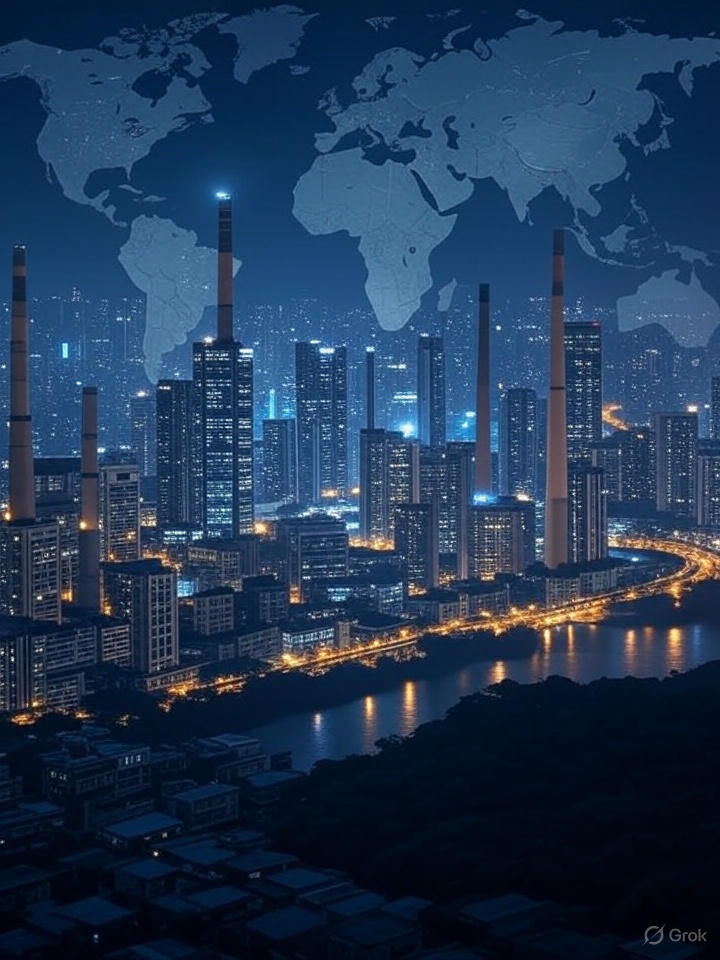India’s Innovation Mirage: Why We’re Chasing Dreams Instead of Building the Future
- thebrink2028
- Jun 12
- 4 min read

India dreams of becoming a global innovation powerhouse, rivaling Silicon Valley or Shenzhen. The vision is grand: a nation churning out world-class tech, fueled by a vibrant ecosystem of risk-takers and visionaries. Yet, beneath the rhetoric lies a stark reality, one that TheBrink’s readers deserve to hear unfiltered. This isn’t a feel-good story; it’s a data-driven dissection of why India’s innovation ambitions are stuck in quicksand. Brace for a brutally honest take, grounded in logic and numbers, on a dream that’s tougher to achieve than the hype suggests.
The Harsh Reality
India’s innovation ecosystem is a fragile structure built on a flawed foundation. Research and development (R&D) spending languishes at 0.7% of GDP, unchanged for decades, compared to 2.8% in the US, 2.4% in China, and 4.9% in South Korea. This isn’t just a funding shortfall, it reflects a deep-seated aversion to risk. Government grants, mired in bureaucratic red tape, prioritize safe, incremental projects over bold moonshots. Academia remains outdated, churning out graduates trained for exams, not invention. Industry leans on imported tech or marginal tweaks, shying away from unproven R&D. Society, meanwhile, venerates stability, engineers and doctors over inventors. Building a world-class innovation hub on this base is like stacking a skyscraper on sand.
Collaboration between industry and academia, fails in execution. Companies demand quick returns; universities chase prestige through publications, not products. In 2023, venture capital (VC) funding for Indian deep-tech startups totaled just $1.2 billion, a fraction of the $22 billion in the US. Most VC money flows to low-risk sectors like e-commerce or fintech, not transformative fields like quantum computing or biotech. The ecosystem isn’t just underfunded, it’s misaligned, chasing quick wins over long-term breakthroughs.
TheBrink's Predicted Outcomes
Based on trends and hard data, here’s a clear-eyed forecast of India’s innovation trajectory.
Short-Term (1-3 Years): Modest Gains, Loud Hype
R&D spending may edge toward 1% of GDP by 2028, driven by government initiatives like the National Research Foundation’s ₹50,000 crore budget. Funds will favor safe bets, agritech, renewables, while high-risk areas like AI or synthetic biology remain sidelined.
A few high-profile “successes” will dominate headlines, perhaps a DRDO project or a startup from a government incubator. These will be outliers, not systemic shifts. Funding will largely flow to established players, leaving most innovators stranded. Deep-tech startups face an 80% failure or pivot rate within 18 months, per historical trends.
Outcome: Conferences and media will buzz with “world-class innovation” talk, but fragmentation persists. India celebrates small steps while global leaders pull further ahead.
Mid-Term (3-7 Years): Talent Exodus Intensifies
India’s brightest minds will continue to leave. In 2024, over 1 million Indians, many STEM graduates, migrated to the US, Canada, and Europe. Without a robust domestic ecosystem, this brain drain will worsen as researchers and entrepreneurs seek better funding and infrastructure abroad.
Growth may occur in commercially viable sectors like AI or cleantech, but only in low-risk niches, enterprise SaaS, not foundational AI research. Of India’s 1.5 million annual engineering graduates, just 2.5% pursue R&D, compared to 10% in China.
Outcome: India cements its role as a “tech services” hub, excelling at implementing foreign ideas but struggling to birth global giants like NVIDIA or DeepMind. China’s R&D spending could reach 3% of GDP by 2030.
Long-Term (7-15 Years): A Critical Juncture
Optimistic Scenario (20% probability): A catalyst, perhaps a geopolitical crisis or global tech race, forces systemic change. Reformist leaders streamline funding, reduce bureaucracy, and align academia with industry. By 2035, India could spawn a few globally competitive deep-tech firms, boosting its share of global patents to 2-3% from 0.5%. A homegrown ASML or SpaceX emerges, but it’s a steep climb.
Pessimistic Scenario (80% probability): Inertia prevails. R&D spending stalls below 1.5% of GDP, with bureaucracy and risk-aversion choking progress. Funds favor populist projects over high-impact ones. India remains a second-tier player, licensing foreign tech while its startups are acquired by Western or Chinese firms. By 2040, its global innovation share stagnates.
Supporting Evidence
Cultural Barriers: 65% of Indians prioritize job security over entrepreneurship, compared to 40% in the US. This stifles the “fail fast” culture innovation requires.
Funding Misallocation: In 2023, 60% of India’s $14 billion R&D budget went to defense and space (DST data), leaving little for private-sector innovation. The US, by contrast, allocates $150 billion to private R&D, with DARPA’s $4 billion as a supplement.
Talent Misalignment: India produces 1.5 million engineers annually, but only 2.5% work in R&D. China’s STEM graduates increasingly focus on research, giving it an edge.
Global Context: The US and China dominate 80% of AI patents. India’s late entry into the innovation race puts it at a structural disadvantage.
India has raw talent, its diaspora powers Silicon Valley, but talent alone won’t cut it. The ecosystem is rigged against risk, favoring coders over creators. Bureaucracy, outdated academia, and a societal obsession with stability form a triple lock holding back progress. To unlock its potential, India must overhaul its systems: reform education, slash red tape, and embrace failure as a stepping stone. China’s building AI superclusters while India debates funding forms. For those betting on India’s innovation dream, the road ahead is long and treacherous. Change is possible, but without radical action, it’s a distant hope.
-Chetan Desai (chedesai@gmail.com)


